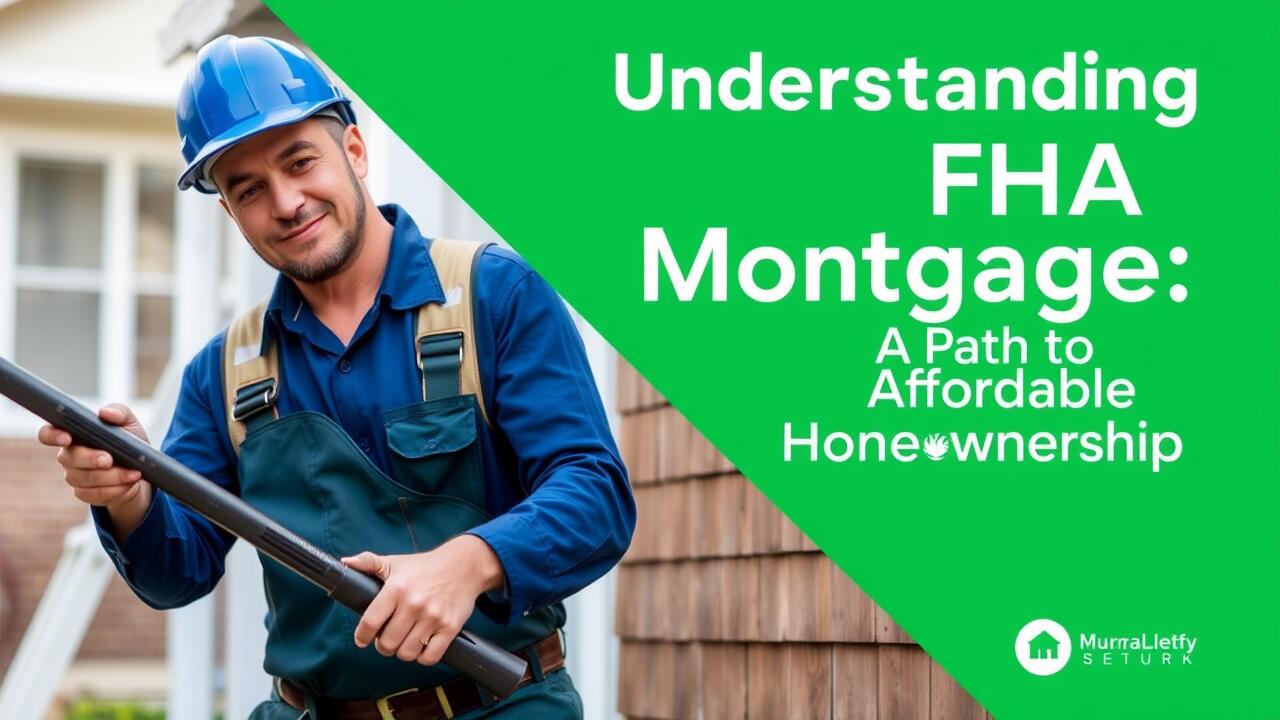Understanding mortgage notes is essential for anyone considering their financial options in real estate. A mortgage note is a legal document that outlines the terms of a mortgage agreement, detailing the loan amount, interest rate, and repayment schedule. These notes can vary widely, encompassing both residential and commercial mortgages. Fixed-rate mortgages offer stability, while adjustable-rate mortgages may fluctuate over time, impacting their overall value. Investors often look for mortgage bonds, which are securities backed by mortgage notes, providing a steady income stream. Knowing factors such as loan-to-value ratios can help you assess the worth of your note, making it an important topic in the decision to sell my mortgage note. This understanding can play a pivotal role in achieving the best outcomes as outlined in “Sell My Mortgage Note: A Comprehensive Guide to Maximizing Your Returns.”
Sell My Mortgage Note: A Comprehensive Guide to Maximizing Your Returns | What is a Mortgage Note?
A mortgage note is a legal document that outlines the terms of a loan secured by real estate. It serves as a loan agreement between the borrower and the lender, detailing the repayment structure and interest rate. In the realm of real estate finance, mortgage notes are crucial for facilitating seller financing arrangements. This type of financing allows sellers to provide loans to buyers, creating a unique opportunity for both parties in real estate transactions. Understanding the intricacies of mortgage notes is essential for estate planning and making informed financial decisions.
These financial instruments not only represent a promise to repay the loan but also hold significant value in the market. Selling a mortgage note can be a strategic move for investors looking to maximize returns on their loans. The process involves evaluating current real estate trends and understanding how these notes can fit into broader financial transactions. Seeking financial advice during this process can lead to better outcomes. For those contemplating the option, recognizing the value and potential of their mortgage note is key in making the most out of their investment.
The Importance of Mortgage Notes in Real Estate
Mortgage notes serve as a foundational aspect of real estate transactions. They represent a legal obligation between a borrower and a lender, outlining the terms of the loan used to purchase a property, whether it’s a primary residence or a rental property. Understanding the intricacies of mortgage notes is crucial for anyone considering to sell their mortgage note. This knowledge can empower individuals to navigate their personal finance strategies effectively while maximizing their returns. Sell My Mortgage Note: A Comprehensive Guide to Maximizing Your Returns can help individuals make informed decisions in a fluctuating market influenced by factors like interest rates and creditworthiness.
The value of a mortgage note can significantly impact the financial landscape for both lenders and buyers. A thorough property appraisal can determine note value, influencing interest rates and the potential for bank loans. For borrowers, these notes can provide essential access to funding that may not be available through traditional means. Understanding this dynamic between mortgage notes and real estate allows sellers to harness their assets effectively, ultimately leading to better financial outcomes. Resources like Sell My Mortgage Note: A Comprehensive Guide to Maximizing Your Returns can shine a light on how to effectively leverage these financial tools.
- Understand the key components of a mortgage note, including interest rate, repayment schedule, and maturity date.
- Recognize the implications of selling a mortgage note on immediate cash flow and long-term financial planning.
- Assess the market conditions that can affect the value of your mortgage note, such as economic trends and interest rates.
- Explore potential strategies for improving the terms of your mortgage note before selling, to maximize its value.
- Consult with financial advisors or specialists who can provide insights into the complexities of mortgage note transactions.
- Familiarize yourself with the documentation required for selling a mortgage note to ensure a smooth process.
- Keep abreast of state regulations and guidelines that may impact the sale or transfer of mortgage notes.
The Decision to Sell My Mortgage Note
Selling a mortgage note can be a significant decision, influenced by various factors in the realm of real estate investment. Many owners consider this route to achieve financial stability or to free up capital for other real estate investments. Understanding the valuation is crucial, as it determines how much a seller can expect to receive from potential buyers. Factors like the credit score of the borrowers, the fixed interest rates associated with the note, and the overall market conditions all play a role in this assessment. Engaging financial advisors can provide invaluable insights and strategies to navigate the complexities of the selling process. By clarifying motivations and expectations, one can make informed decisions that align with the aim to maximize returns.
Reasons for Selling Mortgage Notes
Homeowners may consider selling their mortgage note for various reasons. A desire for immediate cash can drive many to look into mortgage note sales. Whether the note is a full mortgage note or a high-performing mortgage note, turning it into liquid assets can provide an opportunity to address pressing financial needs. Engaging a knowledgeable broker can make this process smoother as they can present competitive mortgage note offers to maximize returns. This aligns with the goal outlined in “Sell My Mortgage Note: A Comprehensive Guide to Maximizing Your Returns,” emphasizing the importance of understanding your options.
Investors might also want to sell their mortgage note if they perceive a shift in interest rates or market conditions. Selling your mortgage note can be a strategic decision to reinvest in more lucrative opportunities, particularly in the commercial mortgage note sector or other higher-yielding investments. By evaluating the current value of your mortgage note, you can make informed choices that align with your financial goals. Exploring all avenues in the context of mortgage note selling can lead to optimal outcomes and ensure you are well-prepared for the mortgage note sale process.
| Reason for Selling | Description | Potential Benefits |
|---|---|---|
| Immediate Cash Needs | Homeowners may need fast liquidity to cover pressing expenses. | Provides quick access to funds for emergencies. |
| Shift in Market Conditions | Investors may sell if they anticipate changes in interest rates or market dynamics. | Opportunity to reinvest in more profitable ventures. |
| Maximize Returns | Engaging with knowledgeable brokers can help sellers obtain competitive offers. | Ensures better financial outcomes from the sale. |
| Portfolio Diversification | Selling notes allows for reinvestment into varied investment opportunities. | Reduces risk by spreading investments across different assets. |
Evaluating Your Options
Choosing the right path for selling your mortgage note is crucial. A performing mortgage note can offer steady income, while a private mortgage note may be more appealing for those looking for quick cash. Understanding the key mortgage note details is essential to make informed decisions. Buyers often seek specific mortgage note investments, so researching mortgage notes thoroughly can enhance your bargaining position. By knowing how the original mortgage note defines the investment opportunity, you can better evaluate your options.
Evaluating your mortgage note results is vital for maximizing returns. Consider the value of potential cash flow and the impact of current market conditions on mortgage notes buyers’ interest. Knowing the mortgage note essentials and any safeguards involved protects your interests during the sale. Taking the time to analyze both your financial goals and the specific characteristics of your mortgage note will lead you to a more beneficial outcome. Following the principles from “Sell My Mortgage Note: A Comprehensive Guide to Maximizing Your Returns” can help streamline this process.
The Selling Process
Understanding how to navigate the selling process is crucial for anyone looking to maximize their returns in the mortgage note sector. This phase often involves evaluating the attractiveness of your mortgage note investments, which directly influences mortgage notes price. A clear grasp of mortgage note payments and the factors that sway mortgage note value can significantly enhance your strategy. Many sellers consider private mortgage notes, as these alternative options may offer more favorable terms in the mortgage market. It is essential to recognize how the decision to sell your mortgage note hinges on the current demand and buyer expectations. This comprehensive guide aims to empower sellers to make informed decisions and ultimately secure the best possible outcome.
How to Sell Your Mortgage Note
Selling a mortgage note involves a series of well-defined steps. First, gather your original mortgage documents, including the mortgage deed and the original mortgage agreement. These documents will outline the terms and conditions of your secured mortgage notes and are crucial for potential buyers. Understanding the structure of your private mortgage, especially if it was created as part of a real estate transaction, can significantly impact your decision. If circumstances such as a divorce complicates mortgage payments, selling your mortgage note may provide the financial relief you need.
Once you have compiled the necessary documentation, consider the market for your mortgage asset. Institutional mortgage notes often attract serious buyers who appreciate the value of eye mortgage notes with reliable payment histories. By doing some research on buyers and their expectations, you can position your mortgage note more effectively within the market. Selling your mortgage note is not just a financial transaction; it’s about maximizing returns and ensuring that you are receiving a fair price for your investment.
Key Considerations When Selling
Selling a mortgage note involves navigating a complex mortgage market process. Understanding the difference between traditional bank mortgages and private note buyers is crucial for maximizing your returns. Real estate notes represent a valuable asset and can often be sold at a premium, especially when potential buyers see the note’s worth as a reliable income stream. For those interested in selling their notes, it’s beneficial to work with note brokers who have expertise in this area and can ensure you understand each aspect of the sale.
Evaluating the terms of your note is another key consideration. A note—a loan agreement between a borrower and lender—can vary significantly in value based on its payment history, interest rate, and remaining balance. Factors such as the creditworthiness of the borrower and the possibility of term mortgage bonds can influence your decision. Understanding what a notes buyer is looking for can prepare you to present your real estate loan in the best light, ultimately aiding in achieving the best price in alignment with your goals in the sale.
Maximizing Your Returns
Understanding the various factors that affect mortgage note value is crucial for those looking to sell their mortgage note. Sellers should consider details such as the original loan amount, outstanding loan amount, and the loan term to ensure they present a well-priced note to potential note purchasers. Residential notes often hold unique attributes that impact their appeal in the market. Leveraging the services of a licensed mortgage originator can provide valuable insights during the note sale process, helping sellers navigate the complexities of fixed-rate financing. Through careful evaluation of these elements, individuals can significantly enhance their chances of maximizing their return on the entire note purchase. This comprehensive approach aligns with the goals outlined in “Sell My Mortgage Note: A Comprehensive Guide to Maximizing Your Returns.”
Factors That Affect Mortgage Note Value
The value of a mortgage note hinges on several critical factors. Loan structuring plays a significant role, as the terms outlined in the original loan agreement dictate the note’s investment potential. Note owners should consider the loan balance and total loan term as these elements influence the return on investment. A strong buyer-seller relationship can also enhance the selling process, as it facilitates communication and fosters trust, which is essential in the note sale market.
Another vital aspect is the borrower’s creditworthiness. A borrower with a strong credit profile increases the mortgage note’s worth, making it more attractive to potential buyers. Understanding similar note sales can provide a benchmark for pricing and help note owners gauge the market. To effectively manage loans and maximize returns, it’s crucial to stay informed about current trends in the note sale market, which can directly impact decisions on when to sell and at what price, reinforcing the need for a robust strategy as outlined in “Sell My Mortgage Note: A Comprehensive Guide to Maximizing Your Returns.”
Strategies for Getting the Best Price
Understanding the factors that affect note sales is crucial for anyone looking to sell their mortgage note. Potential buyers assess the risk associated with borrower defaults and evaluate the financial backing provided for the loans. A well-structured note with attractive payment history and terms can significantly enhance buyer interest. Sellers should be aware that financing alternatives and the note yield can also play pivotal roles in determining the final sale price. In “Sell My Mortgage Note: A Comprehensive Guide to Maximizing Your Returns,” strategies are outlined to ensure that sellers can capitalize on these factors effectively.
Implementing strategic financial planning is essential for getting the best price during note trading. Sellers should actively communicate with potential buyers about the specific loan features and the stability of the borrower concerning loans. As borrower default increases, the perceived risk may lower the note’s value, affecting overall negotiations. Highlighting the advantages of direct financing can attract more prospective buyers, ultimately leading to a more favorable sale outcome. Following the guidance in “Sell My Mortgage Note: A Comprehensive Guide to Maximizing Your Returns” can help navigate this complex process.
Common Pitfalls in Selling Mortgage Notes
Selling a mortgage note can present various challenges, especially if one is unaware of certain pitfalls during the process. For those looking to sell, it is essential to understand the critical loan conditions that determine the note’s value. Missing or incomplete financial documents can lead to delays or unfavorable outcomes. Low-interest rates can impact the attractiveness of certain notes, making them less appealing to buyers. If there are inconsistencies in loan payments or if the note is unsecured, this can further complicate financial arrangements. As part of a solid financial plan, knowing the risks involved can help you navigate the loan process effectively. To succeed in optimizing your returns, refer back to resources like “Sell My Mortgage Note: A Comprehensive Guide to Maximizing Your Returns” for comprehensive strategies that address common pitfalls.
- Understand the loan-to-value ratio and how it affects note valuation.
- Be aware of state regulations regarding the sale of mortgage notes.
- Ensure all borrower information is accurate and up-to-date.
- Evaluate the overall market conditions before attempting to sell your note.
- Consider working with a reputable note buying company for better insights.
- Avoid rushing the process; take time to review all options and offers.
- Consult a financial advisor for guidance on tax implications from the sale.
Mistakes to Avoid During the Sale
One common mistake note holders make is undervaluing their mortgage note due to a lack of understanding of its true worth. This oversight can result in a significantly lower financial return when attempting to sell. It is crucial for sellers to assess note values thoroughly, considering factors like the creditworthiness of the borrower. High-scoring borrowers generally enhance the value of the note, making it essential to highlight these attributes during negotiations. By following Sell My Mortgage Note: A Comprehensive Guide to Maximizing Your Returns, sellers can ensure they do not leave money on the table.
Another frequent error occurs when sellers fail to choose the right lender for the transaction. Working with buyers who do not align with the financial strategies needed for a successful sale can lead to complications and a diminished outcome. Selecting the right buyer-seller relationship is key to securing financing options that provide competitive advantages, especially in a market with fluctuating low interest rates. Sellers should focus on finding buyers that appreciate fixed interest rate notes to maximize their financial move. SelMy Mortgage Note: A Comprehensive Guide to Maximizing Your Returns emphasizes the importance of due diligence in this essential phase of the selling process.
Understanding Buyer Expectations
Recognizing the expectations of potential buyers is crucial when preparing to sell your mortgage note. Reliable buyers often seek notes with dependable payment histories and stable payment structures. Many borrowers who are serious about their financial commitments attract the attention of ideal buyers. Understanding how to present your note can enhance its saleability. When you provide thorough documentation demonstrating a positive payment record, you position your note favorably in the eyes of prospective purchasers. Buyers will compare your offer with similar notes, emphasizing the importance of showcasing your note’s unique strengths.
The impact of financial shifts on buyer expectations cannot be overstated. Buyers today are acutely aware of the real estate dealings landscape and expect transparency regarding the performance of the mortgage note. Buyers typically appreciate knowing the background of the original lender and the borrower’s reliability. Demonstrating why your note is an excellent investment opportunity can help attract the right buyer. Sellers who understand and meet these expectations can navigate the selling process more effectively, contributing to a satisfying experience. By following insights from “Sell My Mortgage Note: A Comprehensive Guide to Maximizing Your Returns,” you can place yourself in a better position to close the deal.
Working with Professionals
Engaging with professionals during your selling process can significantly enhance your experience and outcomes. The insights provided by experts, such as those who specialize in financial law, can guide you through the complexities of your transaction. Finding the right buyers is crucial, as multiple buyers can lead to better offers and increased competition, ultimately maximizing your returns. Serious buyers often seek specific types of mortgage notes, including unsecured notes and those held by alternative lenders, making it important to market your note effectively. By aligning your goals with professional advice, you can navigate the financial implications of the sale and establish a smooth transition to a new note holder, ensuring successful transactions that cater to buyer interests. This approach forms an essential part of “Sell My Mortgage Note: A Comprehensive Guide to Maximizing Your Returns.”
| Professional Type | Role in Process | Key Benefits |
|---|---|---|
| Financial Advisor | Provides investment strategies | Enhances understanding of market value |
| Real Estate Attorney | Ensures legal compliance | Minimizes legal risks and liabilities |
| Mortgage Broker | Connects you with potential buyers | Increases buyer access for better offers |
| Tax Consultant | Advises on tax implications | Helps optimize tax outcomes from sale |
Conclusion
The journey to sell your mortgage note can significantly impact your financial landscape. “Sell My Mortgage Note: A Comprehensive Guide to Maximizing Your Returns” serves as a crucial resource for individual note holders seeking to navigate this process effectively. Understanding the importance of a mortgage note as a key finance document allows estate executors to make informed decisions. Receiving competitive purchase offers while ensuring regular loan payments are crucial steps in securing trustworthy buyers. By staying updated with financial news, individuals can better position themselves to negotiate favorable terms and ultimately maximize their returns.
FAQS
What are the mortgage note basics that I should understand before selling my mortgage note?
Understanding mortgage note basics is essential for navigating the world of residential mortgages and lending. Mortgage notes are financial instruments that secure real estate transactions, and their value can vary due to discounts and the mortgage note sit. To make informed decisions, it’s important to research mortgage notes and understand the safeguards in place when investing in mortgage notes. Moreover, factors such as mortgage note attractiveness, borrower creditworthiness, and the note worth can influence your options. By considering secure financing options and reliable borrowers, you can effectively manage high-interest debts while maximizing your returns on real estate mortgage transactions. If you are looking for potential buyers, keep in mind that having several buyers can increase the competitive nature of the sale.
What are some essential safeguards to consider in mortgage note investing for a better understanding of its intricacies?
When engaging in mortgage note investing, it’s crucial to understand the importance of mortgage note safeguards to protect your investment. For instance, knowing how a mortgage note isn’t simply a liability but can be a valuable asset is vital. Additionally, being aware of the role a loan lender plays in the process and the significance of national mortgage licensing helps ensure compliance and security in real estate transactions. By recognizing how mortgage notes share their returns, you can make informed decisions that enhance your personal finance strategy and contribute to a secure financial future, especially in scenarios where you might only need to invest a mortgage half.
How can a personal finance writer help me navigate the complexities of real-estate when considering to sell my mortgage note?
A personal finance writer can provide valuable insights and guidance on the real-estate market, helping you understand how to effectively sell your mortgage note while maximizing your returns. Their expertise can assist you in making informed decisions based on current market trends and financing options.
What are the common benefits of selling my mortgage note that potential sellers should know?
Selling your mortgage note can provide several advantages for potential sellers, including immediate cash flow, the ability to reinvest funds, and the reduction of ongoing obligations. It’s important to evaluate how selling your mortgage note aligns with your financial goals to maximize your return on investment.
What factors should I consider when determining the right time to sell my mortgage note?
When deciding the right time to sell your mortgage note, factors such as interest rates, current market conditions, and your financial goals should be taken into account. Additionally, understanding the potential impact of your mortgage note’s terms and the demand in the real estate market can help you maximize your returns.




